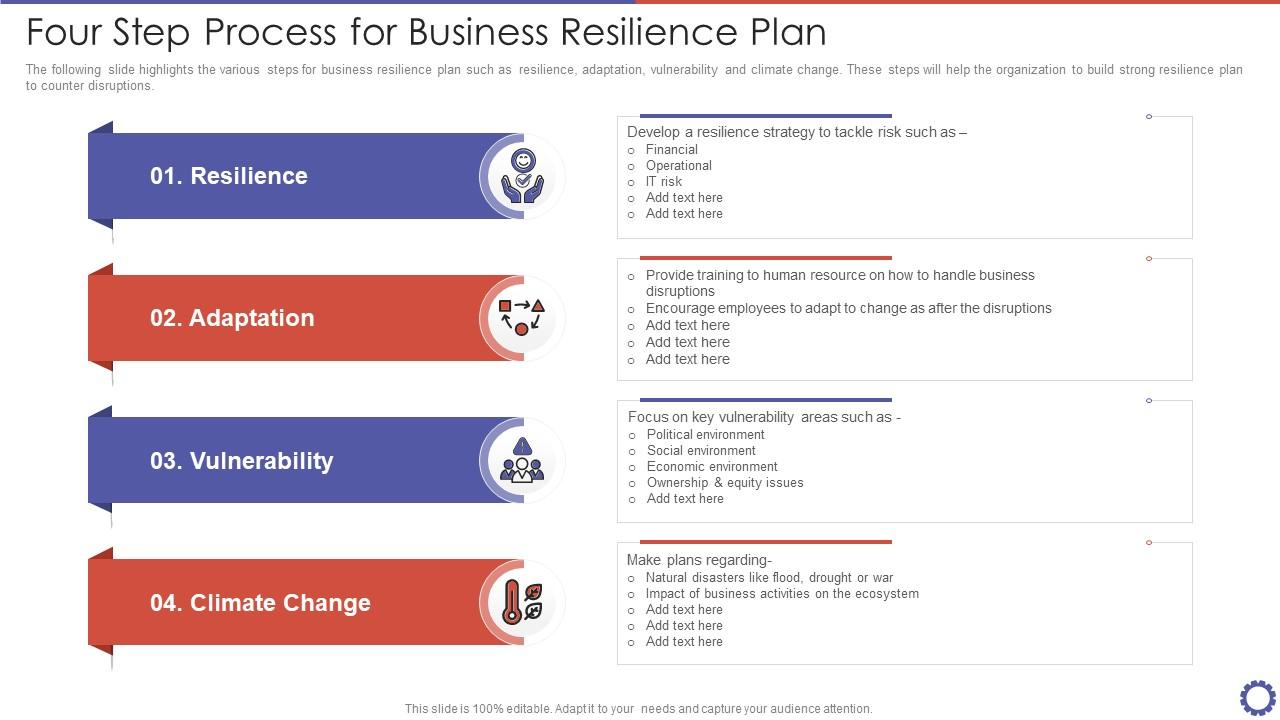
Building Business Resilience: Strategic Planning for Challenges
In the face of uncertainties and challenges, resilience planning has become paramount for businesses. This article explores the importance of resilience planning, key strategies for implementation, and how businesses can fortify themselves to navigate disruptions effectively.
Understanding Resilience Planning
Resilience planning involves preparing businesses to withstand and recover from unexpected disruptions. These disruptions can range from economic downturns and natural disasters to global crises. The goal is to equip businesses with the ability to adapt swiftly, maintain essential operations, and emerge stronger in the aftermath of challenges.
Risk Assessment and Scenario Planning
A fundamental step in resilience planning is conducting a comprehensive risk assessment. This involves identifying potential risks and their impact on various aspects of the business. Scenario planning goes hand in hand, allowing businesses to simulate different scenarios and develop strategies to address each. By understanding potential challenges, businesses can proactively implement measures to mitigate risks.
Diversification of Supply Chains
Global events have highlighted the vulnerabilities of supply chains. Resilience planning emphasizes the need for diversification. Businesses can explore multiple suppliers and geographically distribute their supply chains to reduce dependency on a single source. This not only minimizes the risk of disruptions but also enhances adaptability to changing market conditions.
Digital Transformation for Operational Agility
Embracing digital transformation is a key element of resilience planning. Businesses need to adopt technologies that enhance operational agility. Cloud-based systems, digital communication tools, and automation contribute to streamlined operations. A digitally transformed infrastructure enables businesses to pivot quickly in response to disruptions and maintain continuity.
Human Capital Development and Flexibility
Building resilience extends to the workforce. Businesses should invest in the development of their human capital, ensuring that employees possess a diverse skill set. Additionally, fostering a culture of flexibility and adaptability is crucial. Employees who can navigate change effectively contribute to the overall resilience of the organization.
Financial Preparedness and Contingency Planning
Financial resilience is a cornerstone of business resilience. Establishing a robust financial strategy includes maintaining adequate cash reserves, securing credit lines, and creating contingency plans. Businesses should have financial models that account for various scenarios, allowing them to make informed decisions during challenging times.
Collaboration and Partnerships
Resilience planning emphasizes the importance of collaboration and partnerships. Businesses can build networks within their industry and beyond to share resources and information. Collaborative efforts enhance collective resilience, creating a supportive ecosystem that can weather disruptions more effectively.
Continuous Monitoring and Adaptation
Resilience planning is an ongoing process that requires continuous monitoring and adaptation. Businesses should regularly reassess their risk landscape, update their strategies, and refine their contingency plans. This proactive approach ensures that the business remains agile and responsive to evolving challenges.
Communication Strategies in Crisis Situations
Effective communication is paramount during times of crisis. Businesses should have robust communication strategies in place, both internally and externally. Transparent and timely communication fosters trust among employees, customers, and stakeholders. Businesses that communicate effectively during disruptions are better positioned to manage challenges and maintain confidence.
Embracing resilience planning for businesses as a Strategic Imperative
In the dynamic business environment, resilience planning is not just a strategy; it’s a strategic imperative. This platform offers insights, resources, and solutions to guide businesses in developing and implementing effective resilience plans. By prioritizing resilience, businesses can navigate uncertainties with confidence, ensuring their ability to withstand challenges and emerge stronger on the other side.
